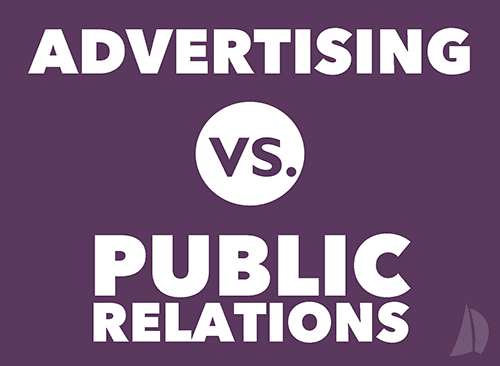
Is advertising an effective way to reach an audience? Indeed. But, often ads fail to make lasting impressions, or even get noticed in the first place.
If your company is seeking IT services, are you most likely to trust an advertisement you hear on the radio, or a recommendation from a business associate? Would you be more compelled to act upon seeing an ad in a newspaper, or having learned about the very same company through an article featuring an interview with the company’s CEO on the value of a well-connected IT infrastructure?
Whereas advertising is a one-way street, driving a message from seller to buyer, public relations aims to engage audiences through strategically embedding the value of people and services into a larger dialogue. The work of a law firm featured in a trade magazine story on international business, the director of a non-profit interviewed on a public radio program, and the president of a financial institution cutting the ribbon of a new branch on local TV are all public relations at work. The value of good PR far exceeds customer testimonials; to be featured in a widely-distributed, content-curating public outlet conveys that an individual or company is worthy of your trust, time and dollar.
Qualitative claims are not possible with advertising – it’s against the law for a manufacturer to state that a product is definitively “the best.” But as a result of public relations efforts, it’s possible for an outside party to state it in their review or critique. And that outside party is a trusted source, be it a popular blog, magazine or TV show. Whether a company is selling video games or accounting services doesn’t matter; there’s an audience for every niche, and media channels delivering content catered for every audience. Services highlighted on these channels become public dialogue, not just a static promotion angling for your attention.
One of the most powerful aspects of public relations is responsiveness. Should something go wrong at your company, would your fix be to run an ad in the paper? Effectively communicating to both internal and external stakeholders during a crisis can make or break a business, and any well-planned PR strategy will include procedures for responding to issues rapidly and intelligently, putting out fires, clearing the air and ultimately, safeguarding your reputation.
Well-designed and strategically placed ads are a valuable promotional asset, but if a company wishes to truly build their credibility, raise their profile and forge deep and long-lasting impressions on audiences, a public relations campaign should be included in the mix.
— by Dan D’Ippolito

